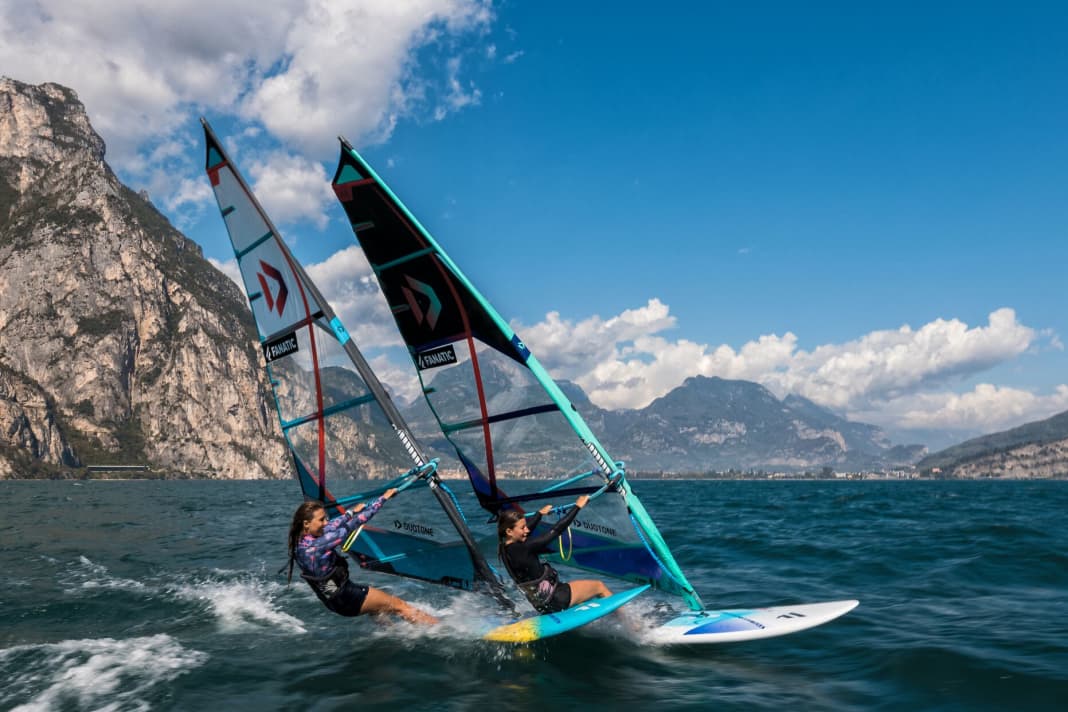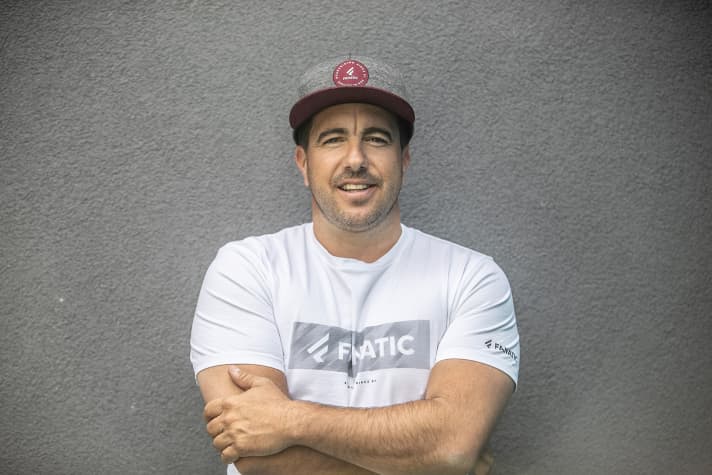





With Gecko and Blast, you already have two freeride boards in your programme. So why another model?
The Gecko is our best-selling board for all areas, and we revised the somewhat sportier Blast last year so that it is now much easier to ride. I thought it was time to address a new target group. I noticed on Lake Garda that many people hire a board to go surfing from time to time. It's all about passive planing and getting into planing as quickly as possible in order to learn the right windsurfing feeling as quickly as possible without any technical skills. That was a difficult balancing act: you want the board to start planing early, but you also don't want it to be boring. And I think the Eagle is more or less the perfect symbiosis, I personally love riding it too! You can just stand on it and then it just gets going. Step on and go, that was the idea!
How did you come up with the idea of making the board longer and narrower? That's basically a step backwards in board design...
A wider and rather shorter board is of course the cooler board for a rider who surfs every weekend or once a month, because it is more active and sportier to ride. A longer, narrower board, on the other hand, is much easier for someone who is not so experienced. It doesn't have a tendency to turn, it just takes off. We will also extend the line upwards to pick up people who are new to the sport. I believe that as soon as someone glides, they are hooked and stick with it.
As soon as someone glides, they're hooked and stick with it."
Does the board have any other features to appeal to this target group?
The cool thing is the symbiosis between the older generation and a Gecko. This means that the board is still very thin and also has very thin rails, which is very comfortable to ride. In the past, the longer boards were very boxy in cross-section, which made them very technical to ride. Thin boards like the Gecko are easy to ride and also easy to jibe. The difference is: as an experienced windsurfer, you sometimes want to tighten the radius or choose a different one. With the Eagle, you push on the rail and it glides through the jibe for you. That's a totally awesome feeling! Of course, if I were on the water all day, I would sometimes jibe a little tighter, but that's not necessary in this class. The loops are also positioned a little further in and are easy to reach. There is also a second loop position for intermediates, far inboard.

Which surfers is the Eagle primarily aimed at?
I would say a very classic freerider. The Eagle is not boring, but very simple. It's for surfers who just want to freeride - you take the right size and you're ready to go. You don't have to get used to it, it has no airs and graces, you just get on it and ride away. There are no quantum leaps from the Gecko, it's just this plug & play. If someone rents a board at the Conca, they should go out, glide and say "How awesome!"
If someone rents a board, they should go out, glide and say "How awesome!"
What should a newcomer be able to do or bring with them?
I believe that as soon as he has a sense of balance, which is certainly the most difficult thing about windsurfing, then he can get going straight away! We are also working on a training concept in the background, where you can put people directly on a board like this. Normally you would start on a Viper and then switch to the Gecko. And the type of windsurfer who just wants to glide can then take the Eagle. There is actually no limit to the top end. Of course, it's not like a Blast in terms of top speed, but if that's important to you and you have the riding ability, then just look there, that's what we have it for.
When do other models become more interesting?
I'd say someone who hasn't surfed for a year and rents a board at the centre will take an Eagle 130 for the first day, then switch to the Blast 100 once they've ridden around for a day and are fully back into it. As soon as you can ride an Eagle, you'll be fine with the Blast! But it just needs a bit more riding ability. In future, we will make the range smaller and more functional to make it easier for the customer in the shop or in the centre to choose a board depending on their level.
What is the difference between the two Eagle designs?
Of course, this is primarily a question of price. HRS is a classic epoxy sandwich construction, the LTD is one size lighter. I made the prototypes in such a way that they also work very well in the low-cost version, which is also very important. This is the best-selling version in the class. If you want to afford it, you get an upgrade in the LTD design. This starts with the carrying and ends with the riding experience. It is important to know: The normal construction is not worse, there is simply a good and a very good version.
Technical data Fanatic Eagle



- Available sizes:130, 150
- Length:250, 250 cm
- Width: 73, 78 cm
- Finn: 42, 46 cm (Powerbox, Foil-Ready)
- More info under fanatic.com

